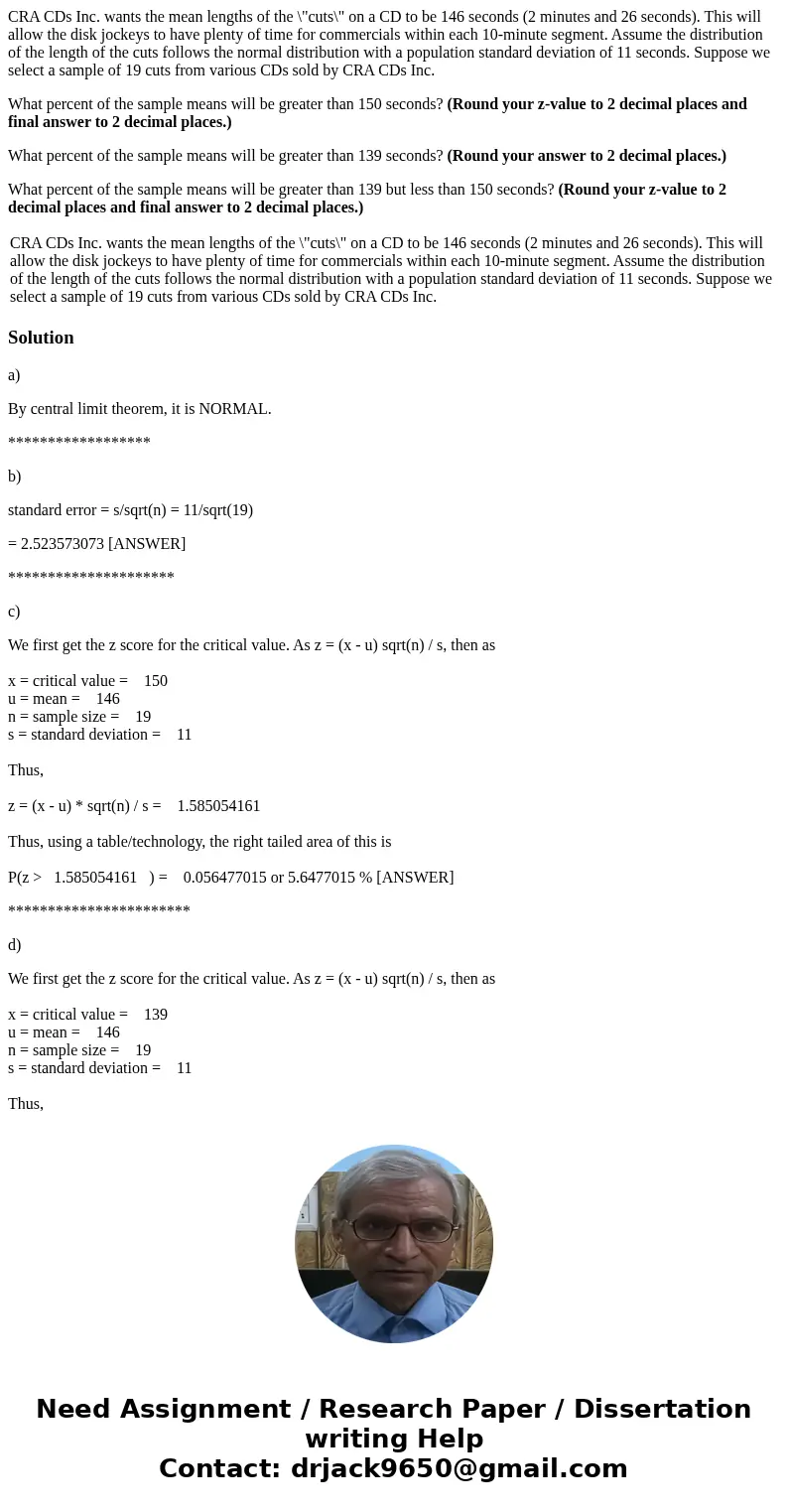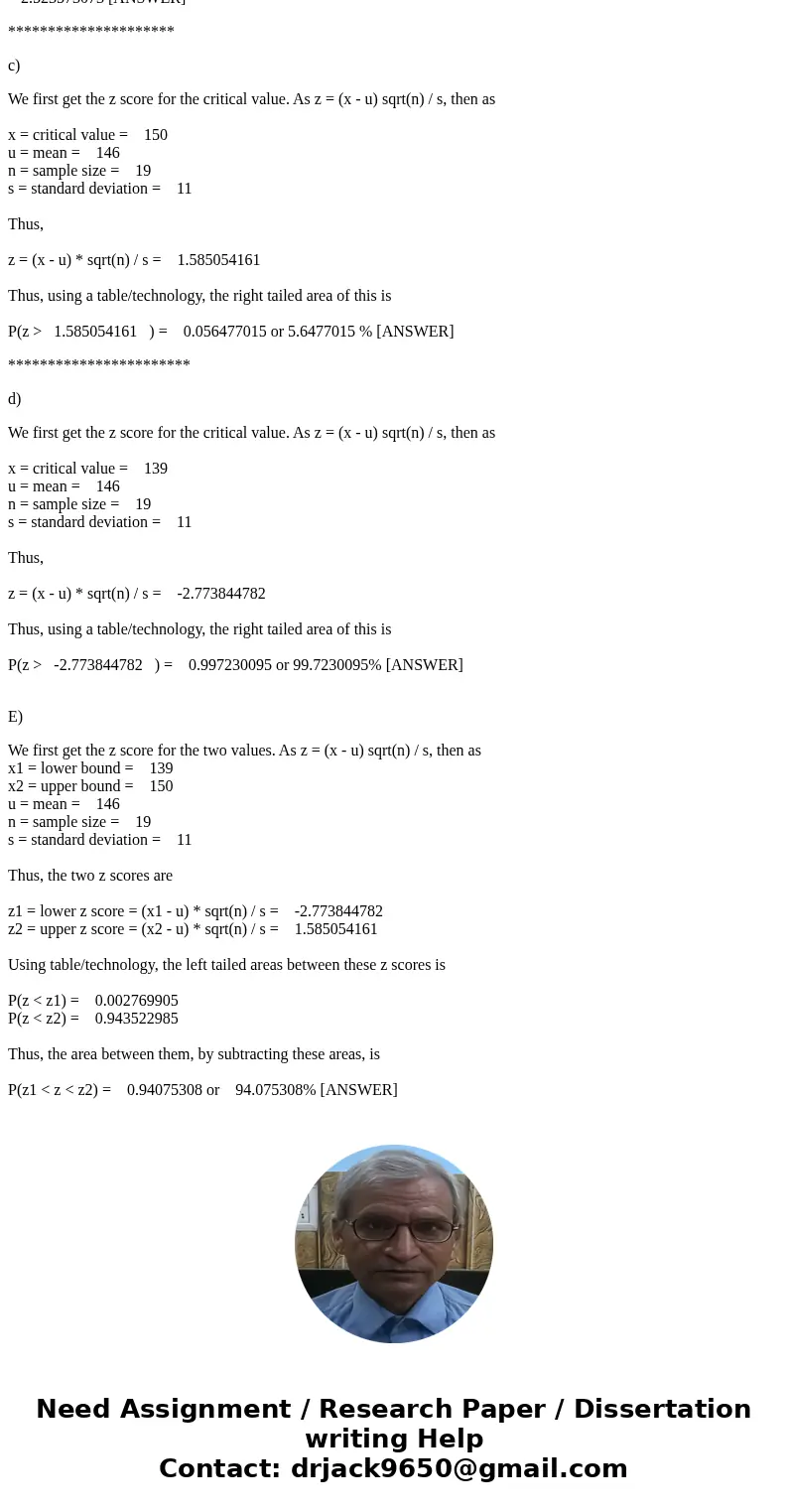CRA CDs Inc wants the mean lengths of the cuts on a CD to be
CRA CDs Inc. wants the mean lengths of the \"cuts\" on a CD to be 146 seconds (2 minutes and 26 seconds). This will allow the disk jockeys to have plenty of time for commercials within each 10-minute segment. Assume the distribution of the length of the cuts follows the normal distribution with a population standard deviation of 11 seconds. Suppose we select a sample of 19 cuts from various CDs sold by CRA CDs Inc.
What percent of the sample means will be greater than 150 seconds? (Round your z-value to 2 decimal places and final answer to 2 decimal places.)
What percent of the sample means will be greater than 139 seconds? (Round your answer to 2 decimal places.)
What percent of the sample means will be greater than 139 but less than 150 seconds? (Round your z-value to 2 decimal places and final answer to 2 decimal places.)
| CRA CDs Inc. wants the mean lengths of the \"cuts\" on a CD to be 146 seconds (2 minutes and 26 seconds). This will allow the disk jockeys to have plenty of time for commercials within each 10-minute segment. Assume the distribution of the length of the cuts follows the normal distribution with a population standard deviation of 11 seconds. Suppose we select a sample of 19 cuts from various CDs sold by CRA CDs Inc. |
Solution
a)
By central limit theorem, it is NORMAL.
******************
b)
standard error = s/sqrt(n) = 11/sqrt(19)
= 2.523573073 [ANSWER]
*********************
c)
We first get the z score for the critical value. As z = (x - u) sqrt(n) / s, then as
x = critical value = 150
u = mean = 146
n = sample size = 19
s = standard deviation = 11
Thus,
z = (x - u) * sqrt(n) / s = 1.585054161
Thus, using a table/technology, the right tailed area of this is
P(z > 1.585054161 ) = 0.056477015 or 5.6477015 % [ANSWER]
***********************
d)
We first get the z score for the critical value. As z = (x - u) sqrt(n) / s, then as
x = critical value = 139
u = mean = 146
n = sample size = 19
s = standard deviation = 11
Thus,
z = (x - u) * sqrt(n) / s = -2.773844782
Thus, using a table/technology, the right tailed area of this is
P(z > -2.773844782 ) = 0.997230095 or 99.7230095% [ANSWER]
E)
We first get the z score for the two values. As z = (x - u) sqrt(n) / s, then as
x1 = lower bound = 139
x2 = upper bound = 150
u = mean = 146
n = sample size = 19
s = standard deviation = 11
Thus, the two z scores are
z1 = lower z score = (x1 - u) * sqrt(n) / s = -2.773844782
z2 = upper z score = (x2 - u) * sqrt(n) / s = 1.585054161
Using table/technology, the left tailed areas between these z scores is
P(z < z1) = 0.002769905
P(z < z2) = 0.943522985
Thus, the area between them, by subtracting these areas, is
P(z1 < z < z2) = 0.94075308 or 94.075308% [ANSWER]


 Homework Sourse
Homework Sourse